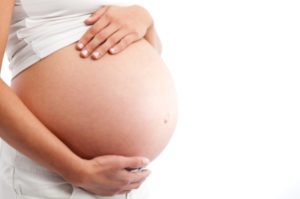 This recent scientific (and yes, technical) article discusses the tantalizing promise of treating cancer, especially melanoma, with infections and certain vaccines. Much discussion of how two vaccines that are already out there may prevent some cancers such as melanoma and leukemia (vaccination with Bacille Calmette-Guerin (BCG) of newborns and vaccination with the yellow fever 17D vaccine of adults).This recent article is a further development on what was discussed in the last post (Injecting a person with a bacterial extract - called Coley's toxins or Coley toxins - to cause an infection, and so treat cancer). From BioMed Central:
This recent scientific (and yes, technical) article discusses the tantalizing promise of treating cancer, especially melanoma, with infections and certain vaccines. Much discussion of how two vaccines that are already out there may prevent some cancers such as melanoma and leukemia (vaccination with Bacille Calmette-Guerin (BCG) of newborns and vaccination with the yellow fever 17D vaccine of adults).This recent article is a further development on what was discussed in the last post (Injecting a person with a bacterial extract - called Coley's toxins or Coley toxins - to cause an infection, and so treat cancer). From BioMed Central:
The biography of the immune system and the control of cancer: from St Peregrine to contemporary vaccination strategies
In 1875 Campbell de Morgan, a surgeon at the Middlesex Hospital in London, reported that regressions and remissions of cancers sometimes occurred after post-operative infections, particularly the streptococcal infection erysipelas...
Campbell de Morgan’s observation that remissions sometimes occurred after post-operative streptococcal infections inspired some workers to undertake the risky procedure of deliberately inducing erysipelas in cancer patients. Subsequently, an American surgeon, William Coley, developed bacteria-free extracts of streptococci and other bacteria (“Coley toxins”) and reported their successful use in the therapy of cancers, especially sarcomas, between 1881 and 1936 . Unfortunately Coley, a mild mannered and unassuming gentleman, did not adhere to rigorous scientific protocols in his studies and he was marginalized by forceful personalities advocating radiotherapy. Notwithstanding, an analysis of his results with cancer deemed inoperable undertaken in 1994 revealed a remission rate of 64% and a five-year survival rate of 44%, results equal to or better than those with modern therapies [14].
It is also now appreciated that chronic inflammation is an essential element of cancers and it has indeed been termed ‘the other half of the tumour’ [37]. The normal healing process relies on inflammation, collagen production, angiogenesis and cell proliferation and, in a description of the similarities between tumour stroma formation and wound healing, tumours have been referred to as “wounds that do not heal” [38],
The relationship between infection, and associated inflammation, and cancer is a complex and paradoxical one and there are several well described examples of cancer being the direct consequence of infection [41]. Around 2 million of the 12.7 million new cancer cases worldwide in 2008 (16.1%) were assumed to be related to infection, principally Helicobacter pylori, hepatitis viruses, and the human papilloma virus, with a higher proportion in developing countries (22.9%) than in developed ones (7.4%) [42]. The large majority of cases of cancer, especially those in the developed nations, are therefore not caused by infection – on the contrary, there is growing evidence that a history of certain infections and environmental exposure to certain populations of micro-organisms, as well as some types of vaccination, may induce patterns of immune reactivity that reduce the risk of at least some cancers.
A study of an adult population in Italy demonstrated an association between a history of common childhood infectious diseases (measles, chickenpox, rubella, mumps and pertussis) and the risk of developing chronic lymphatic leukaemia (CLL), with a strong inverse relationship between the risk of CLL and the number of infections (p = 0.002) [47].
In the 1990s Kölmel and colleagues established a working group – Febrile Infections and Melanoma (FEBIM) – within the European Organization for Research and Treatment of Cancer (EORTC). Based on a pilot study [79] this group undertook a series of studies to establish the relationship between the risk for developing melanoma and a history of, initially, infectious diseases [80], and, subsequently, also of vaccinations [81,82].
In the first report of the FEBIM group a significant level of protection against melanoma in those with a history of certain severe infections (sepsis, Staph. aureus infection, pneumonia, pulmonary tuberculosis) with fever of over 38.5°C was demonstrated [80]. It should, however, be noted that these apparently melanoma-protective infectious diseases have become rare in the industrialized nations.
It is claimed that, as a result of recent observational studies, measures for prevention of some malignancies such as melanoma and certain forms of leukaemia are already at hand: vaccination with Bacille Calmette-Guérin (BCG) of new-borns and vaccination with the yellow fever 17D (YFV) vaccine of adults. While the evidence of their benefit for prevention of malignancies requires substantiation, the observations that vaccinations with BCG and/or vaccinia early in life improved the outcome of patients after surgical therapy of melanoma are of practical relevance as the survival advantage conferred by prior vaccination is greater than any contemporary adjuvant therapy.
 For a while now it has become clear to some scientists that the prevailing view of Alzheimer's disease (buildup in the brain of 2 substances: amyloid and tau) isn't correct. Instead, some researchers feel that there is growing evidence that viruses are implicated as a cause of Alzheimer's and other neurodegenerative diseases (e.g., vascular dementia, ALS, Parkinson's disease, multiple sclerosis).
For a while now it has become clear to some scientists that the prevailing view of Alzheimer's disease (buildup in the brain of 2 substances: amyloid and tau) isn't correct. Instead, some researchers feel that there is growing evidence that viruses are implicated as a cause of Alzheimer's and other neurodegenerative diseases (e.g., vascular dementia, ALS, Parkinson's disease, multiple sclerosis).
 When COVID-19 vaccines first became available to the general public in 2021, women were concerned over whether it was safe to get vaccinated during pregnancy. The answer (from medical studies) is yes, the vaccines are safe and beneficial for both the mother and baby. This is great news!
When COVID-19 vaccines first became available to the general public in 2021, women were concerned over whether it was safe to get vaccinated during pregnancy. The answer (from medical studies) is yes, the vaccines are safe and beneficial for both the mother and baby. This is great news! This recent scientific (and yes, technical) article discusses the tantalizing promise of treating cancer, especially melanoma, with infections and certain vaccines. Much discussion of how two vaccines that are already out there may prevent some cancers such as melanoma and leukemia (vaccination with Bacille Calmette-Guerin (BCG) of newborns and vaccination with the yellow fever 17D vaccine of adults).This recent article is a further development on what was discussed in the last post (Injecting a person with a bacterial extract - called Coley's toxins or Coley toxins - to cause an infection, and so treat cancer). From BioMed Central:
This recent scientific (and yes, technical) article discusses the tantalizing promise of treating cancer, especially melanoma, with infections and certain vaccines. Much discussion of how two vaccines that are already out there may prevent some cancers such as melanoma and leukemia (vaccination with Bacille Calmette-Guerin (BCG) of newborns and vaccination with the yellow fever 17D vaccine of adults).This recent article is a further development on what was discussed in the last post (Injecting a person with a bacterial extract - called Coley's toxins or Coley toxins - to cause an infection, and so treat cancer). From BioMed Central: